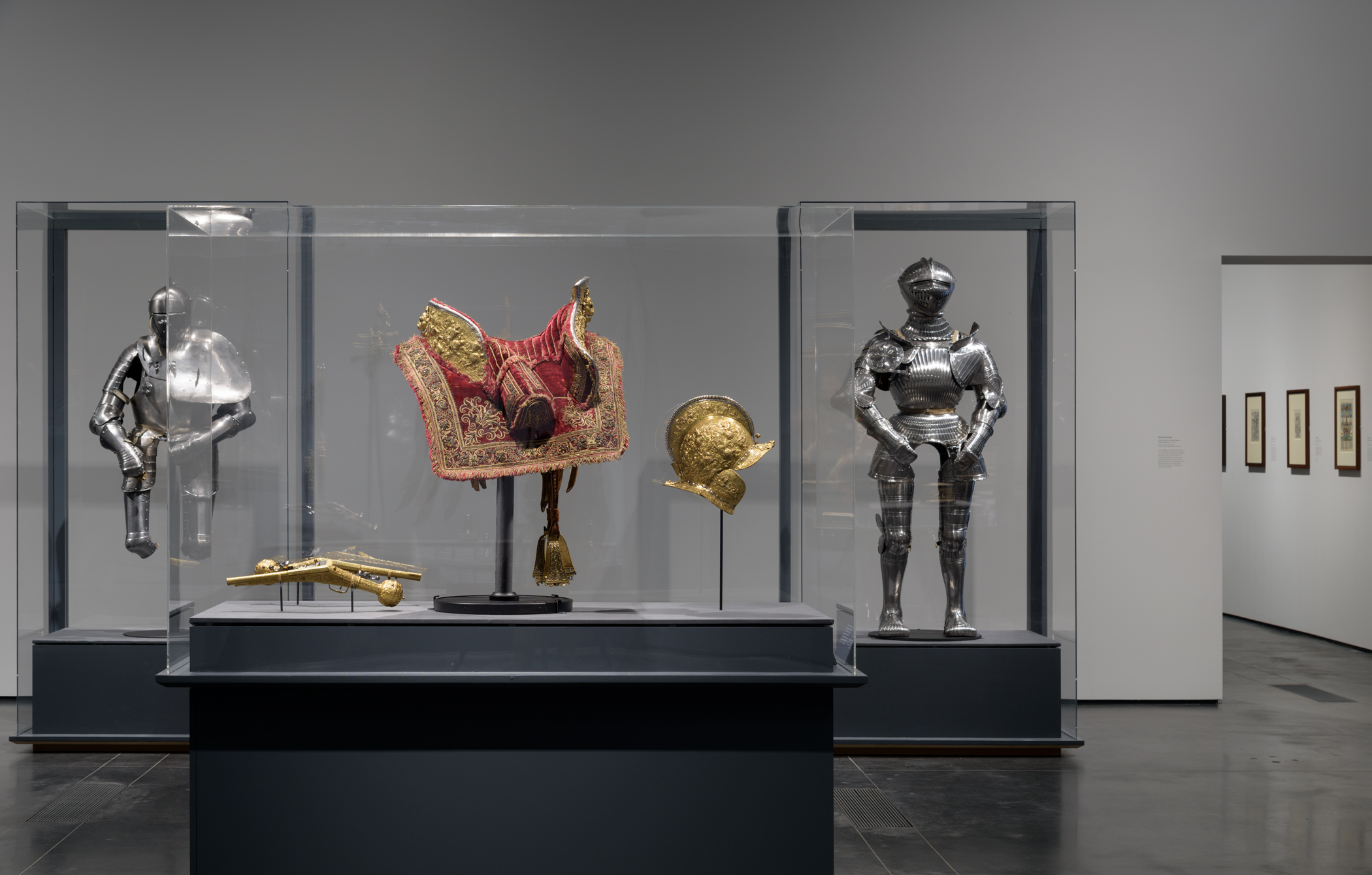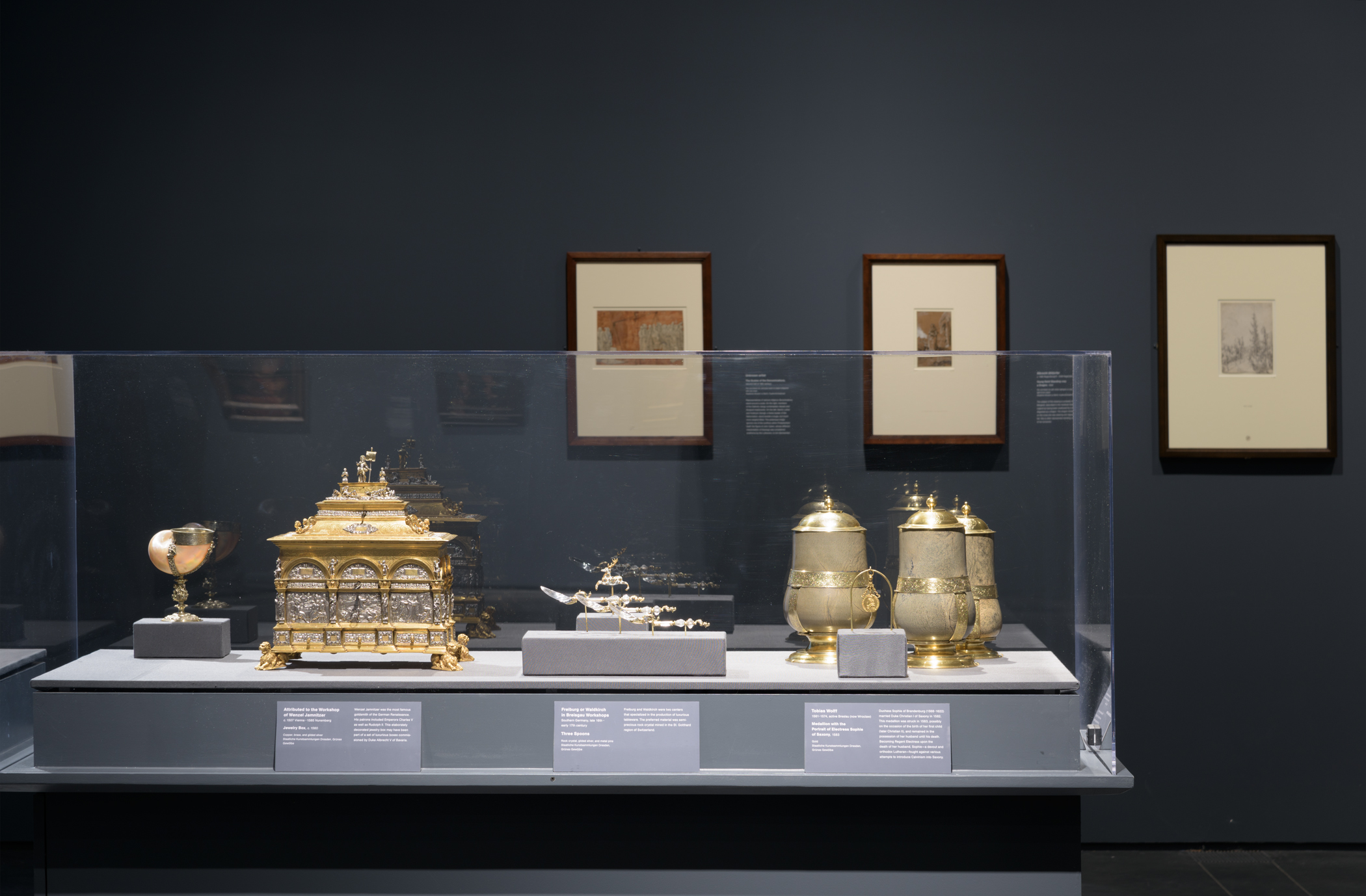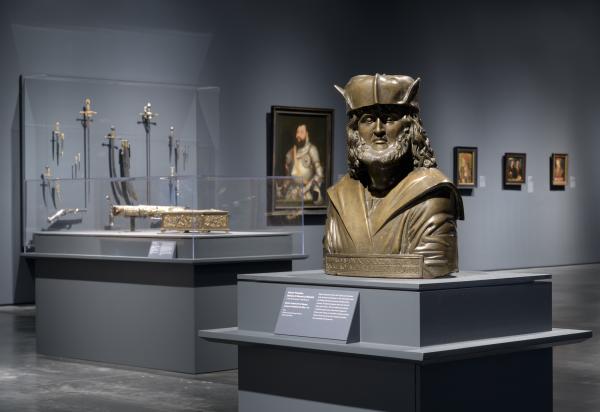One of LACMA's newest exhibitions is Renaissance and Reformation: German Art in the Age of Dürer and Cranach, which features some of the greatest achievements of German Renaissance art. The exhibition comprises over 100 pieces, including paintings, drawings, sculptures, arms and armors, as well as decorative arts by artists including Albrecht Dürer, Lucas Cranach, Hans Holbein, Mathias Grünwald, Tilman Riemenschneider, Peter Vischer, and more.
In the weeks leading up to the opening, we went behind the scenes to see how exhibition curator J. Patrice Marandel and LACMA's hardworking art preparation and installation team put this exhibition together.
Art preparators install this luxurious saddle, which was a Christmas gift to Elector Christian I from his wife, Sophie, in 1589. Decorated with depictions of antique equestrian battles, this saddle has a hidden mechanism in the lion's head in the pommel—it moved the lion's eyes and tongue up and down.

The saddle is flanked by a helmet, called a burgonet, and pistols; in the background are the fluted armor of Prince Wolfgang of Anhalt-Köthen, who supported the Protestant Reformation and was one of the leaders of the league of Lutheran princes.
Another case in the exhibition contains three parade vessels, made of dark green serpentine and gilded silver, and a jewelry box made of copper, brass, and gilded silver. The jewelry box is attributed to the workshop of Wenzel Jamnitzer, the most famous goldsmith of the German Renaissance. His patrons included Emperors Charles V and Rudolph II.

The objects are installed with a beautiful nautilus cup (on the far left); vessels with precious or exotic materials such as nautilus shells were a specialty of Jamintzer, his workshop, and artists such as Paulus Tullner, who made this cup. Their productions, in Nuremberg, were much in demand by the wealthiest courts of Europe. In the middle is an ornamental jewel that is shaped like a stag, a favorite motif for jewelry, as the animal embodied pride, speed, strength, and shyness, and spoons made of semi-precious rock crystal.
There are more of these sumptuous works of art as well as portraits, prints and drawings, armor, and more in Renaissance and Reformation: German Art in the Age of Dürer and Cranach, on view at LACMA through March 26, 2017.



